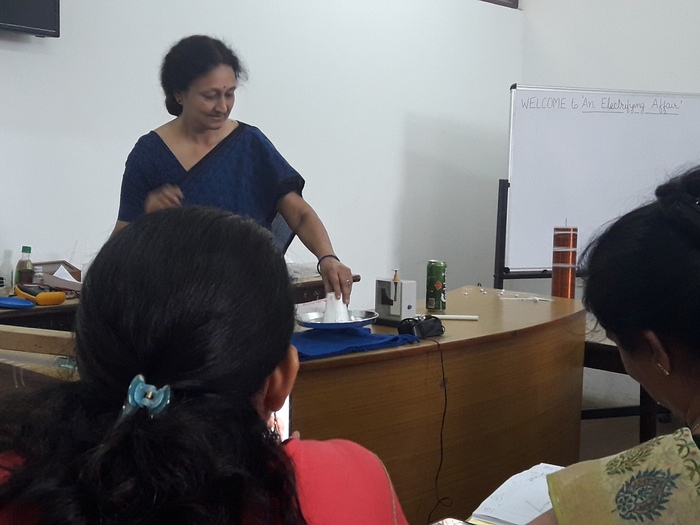Teacher workshop in Physics- Electrifying Affair
The physics teachers of select schools were invited for An Electrifying Affair an empowerment workshop about teaching of electrostatics at Birla Vidya Niketan, Pushp Vihar on 5 May 2018. Ms. P. Yogeshwari, represented our School at the event.
Mrs. Pragya Nopany, coordinator, BVN IAPT Anveshika, conducted the workshop. It focused on creative science integration strategies and the need to make science more fun and meaningful in the classrooms.
The session commenced with a brief discussion on electric charges. When two objects in each other's vicinity have different electrical charges, an electrostatic field exists between them.
[gallery link="file" order="DESC"]
To help prove this concept the following activities were performed:
- A wooden log placed on a spherical object was made to move with the help of a charged PVC pipe.
- Charging by conduction and induction was demonstrated using an electroscope.
- An electric dipole is a separation of positive and negative charges. Activities were performed to find the direction of an electric dipole aligned with an electric field using an aluminum foil and a plastic refill.
- A CFL bulb started glowing when it was brought close to a Tesla coil, due to the equipotential electric field.
- Electric field lines were shown in a beaker containing mustard oil with different shaped electrodes. It was an amazing activity which produced around 2000v.
- A corona discharge is an electrical discharge from a point end of a conductor at high potential. This was effectively shown using a plastic cup, aluminum foil silk cloth, and a PVC pipe, which was quite interesting.
- Shielding the inside from the outside. No electric field exists inside a hollow conductor, even if there are charges present outside. The conductor acts like an electrostatic shield. This is only true if the conductor is kept at a constant potential. This was proved with two concentric soap bubbles, and a charged PVC pipe. The outer bubble was disturbed by the charges provided by the charged PVC pipe whereas the inner bubble was unaffected.
- Capacitor is a device used to store an electric charge, consisting of one or more pairs of conductors separated by an insulator. The speaker brilliantly explained how to make capacitors and highlighted their functions, when connected in series and in parallel, by using stainless steel tumblers and plastic sheets.
The workshop was a fun-filled, enlightening and an enriching experience, filled with innovative activities. We look forward to applying the learnt strategies effectively in our classrooms.
Ms. P. Yogeshwari













